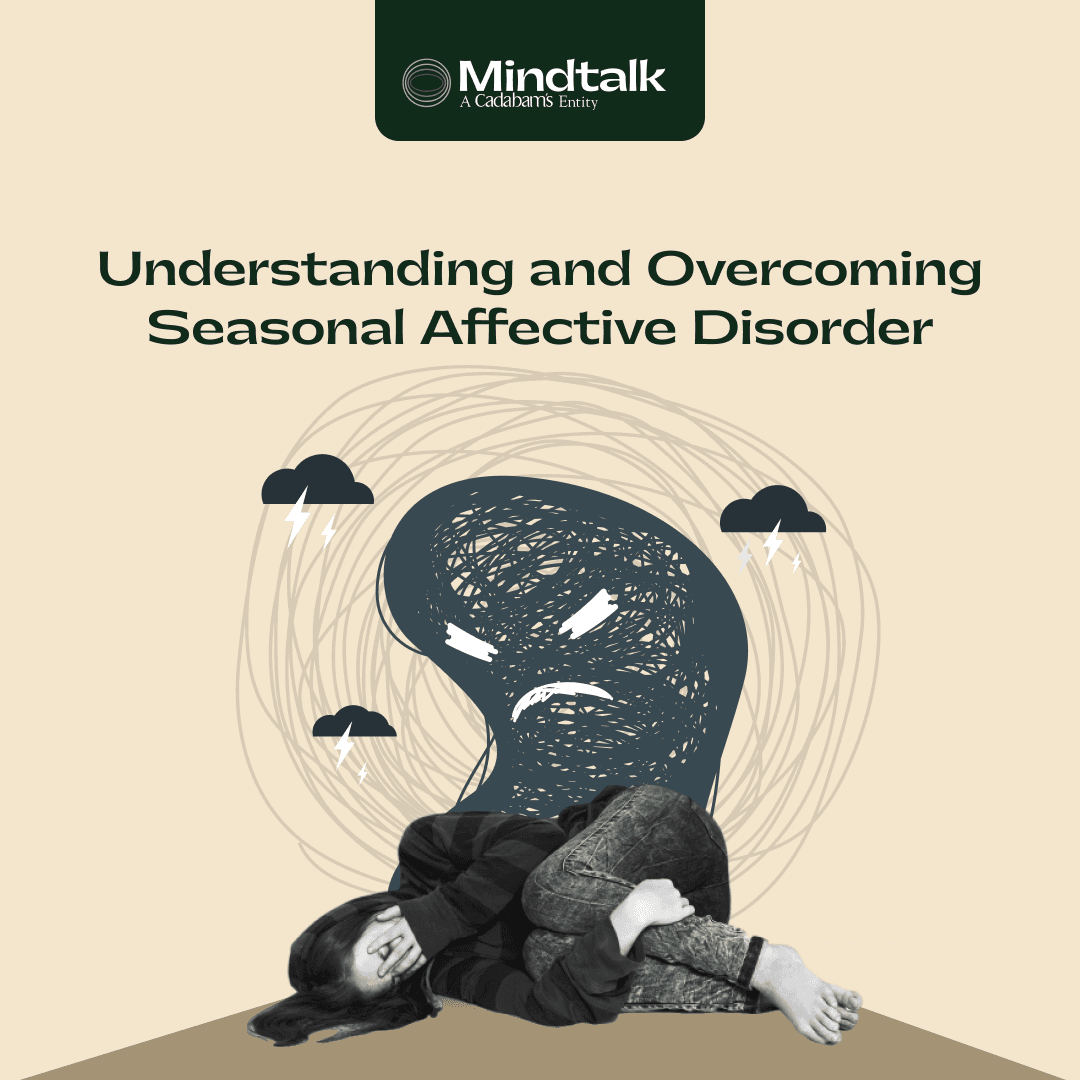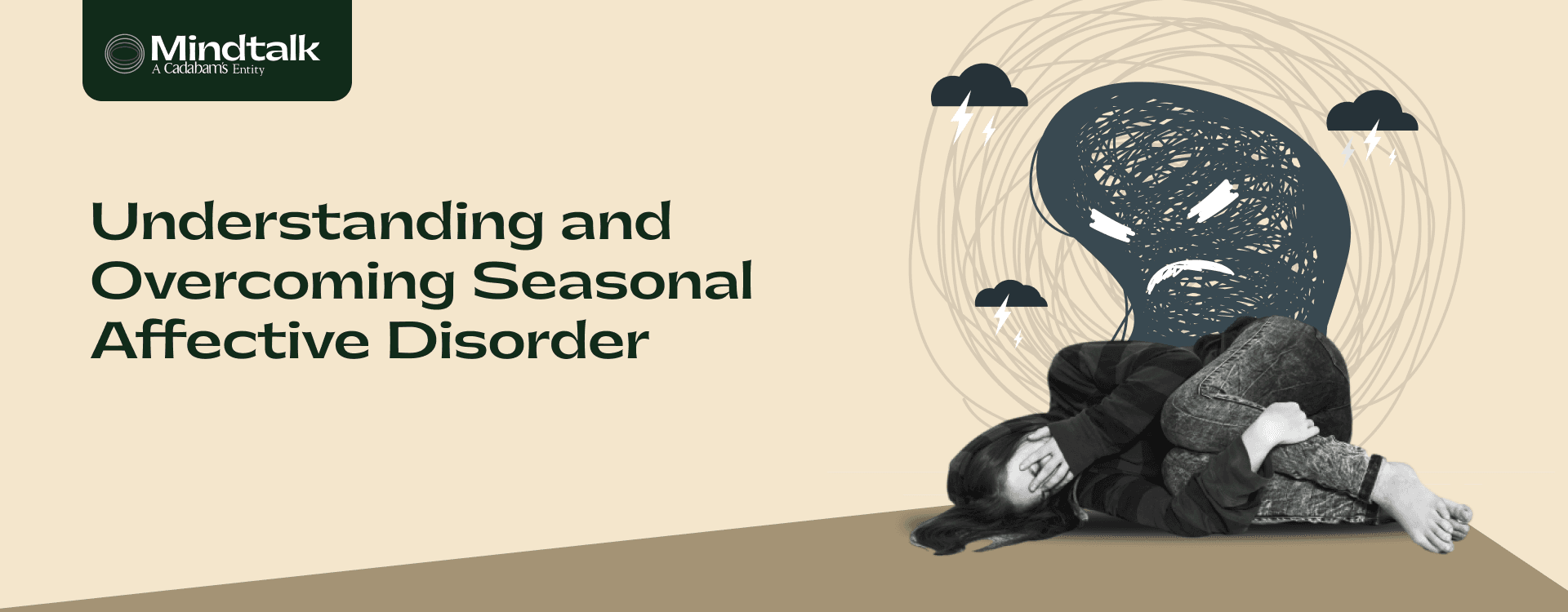Overcoming Seasonal Affective Disorder

It may be subjective, but many of us would agree that winter is one of the best times of the year. It is the time when we bid farewell to those Sun-drenched sticky summer days and welcome more cozy and laidback days of winter chill.
But did you know that winter is also a season when Seasonal Affective Disorder or SAD is more apparent and severe in comparison to other seasons?
Anyhow, let’s understand what exactly is Seasonal Affective Disorder and how you can get rid of it.
What Is Seasonal Affective Disorder?
Seasonal Affective Disorder (SAD), also known as Seasonal Depression, is a type of depression that comes and goes with seasons, especially during the late autumn- early winter, and may end before the pleasant sunny days of Spring.
There are many factors that cause SAD and we will discuss them one by one in this blog.
How Widespread Is Seasonal Affective Disorder (SAD)?
During the holidays, it can be tough to admit to feeling down. But, according to the American Psychiatric Association, about 5% of adults in the US alone experience SAD.
In a different report by the National Institute of Mental Health (NIH), SAD occurs much more often in women than men and it is more common in people with existing mental health issues. A rough estimate also suggests about 2% of the total population experience SAD.
Causes Of Seasonal Affective Disorder (SAD)
SAD is a complex process and a specific cause of this disorder is not known. However, there are a few factors that may be contributing to the development of the disorder and these are:-
Melatonin Level
Melatonin is a hormone produced by the brain in response to darkness which helps you fall asleep. The changes in season disrupt the flow of melatonin, resulting in reduced production and impacting the sleep pattern and mood.
Circadian Rhythm
Circadian Rhythm is an internal clock in our brain that regulates alertness and sleepiness in our body by responding to the changing environment. The onset of fall and winter causes a reduction in sunlight which in turn disturbs the internal clock which may trigger winter depression.
Serotonin Level
Serotonin is an important chemical naturally produced in our body that helps nerve cells and brain function. When this natural chemical is at a normal level it helps you feel more focused, and happy, but a drop in this level affects the mode and may contribute to SAD.
How Seasonal Affective Disorder (SAD) Is Diagnosed?
Diagnosing SAD can be tricky, its complex nature and overlapping symptoms with depression make it much more difficult to diagnose. However, there are a couple of ways mental health professionals can diagnose the disorder.
Physical Exam: Your therapist may conduct a physical examination which may involve in-depth questions about your health to find an underlying link between the condition and physical health.
Lab Test: A complete Blood Test (CBC) and a thyroid test are common as these tests can identify the conditions contributing to SAD.
Psychological Evaluation: Under a psychological test, your mental health provider may ask you about your thoughts, feelings, and behavior to consider if you have SAD or not.
Risk Factors Of SAD
Women are indeed more susceptible to SAD than men. Moreover, the disorder occurs more frequently in younger adults than in older adults. Here are some factors that may increase the risk linked to SAD.
Family History: People with SAD may pass on the condition to blood relatives.
Depression or Bipolar Depression: The presence of symptoms of depression or bipolar depression may worsen the SAD condition.
Staying Way Too North or Way Too South: SAD is more common the farther you are from the equator. This is likely due to reduced sunlight during the winter months
Vitamin D Deficiency: Studies have shown a high prevalence of Vitamin D deficiency in people with seasonal affective disorder.
Effective Treatments For Seasonal Affective Disorder
SAD can indeed be a bit harsh with those mood swings, sad feelings, and struggles to keep the expectations of holidays, but the good news is there are effective treatments available. Some of them are:-
Light Therapy: Light Therapy involves using bright lights and special lamps to cause chemical changes in your brain and uplift your mood.
Cognitive Behavior Therapy (CBT): CBT or talk therapy involves identifying negative thoughts and replacing them with more positive thinking.
Antidepression Medication: Sometimes your therapist or psychiatrist prescribes antidepression medicines either with therapy or alone.
Spending Time Outdoor: When you go out you are exploring possibilities, mingling with nature, and getting more sunlight which will help lessen the severity of symptoms.
Preventing SAD: Tips And Strategies
In the initial phase, you may not even be able to realize that you are experiencing SAD, But, once it is diagnosed you can add a few lifestyle changes to prevent it from happening again. Here are a few tips.
Diet And Exercise
Everyone knows the importance of having healthy eating habits. Choose the right foods that are rich in nutrients, vitamins, and minerals, and give your body at least 20-30 minutes of exercise daily to relieve stress and anxiety.
Maintaining A Regular Schedule
Maintaining a regular schedule helps in improving the sleep-wake cycle which in turn alleviates symptoms of seasonal depression.
Stay Connected Socially
Talking to friends and loved ones is one of the best ways to keep the melancholy feelings at bay. If going out in the cold isn’t something you prefer then finding a creative way to stay indoors can be a great way to spend quality time with loved ones, for example, activities such as cooking together or playing some board games.
Embracing MindTalk For Effective Management Of Seasonal Affective Disorder
Seasonal Affective Disorder may cast a long shadow on your holiday season but it doesn’t have to be like this. At Mindtalk, we understand the unique challenges of SAD and are here to support you get back to your life.
Our team of experienced therapists and psychiatrists specializes in treating SAD and offers a personalized treatment plan for your specific needs. So, reach out to Mindtalk and take the first step towards managing your SAD and welcome your festive season without any worry.












